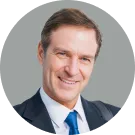EAC Certificate for Auto Parts
The EAC certification is a prerequisite for the export and sale of auto parts to the countries of the Eurasian Economic Union (EAEU), which includes Russia, Belarus, Kazakhstan, Armenia, and Kyrgyzstan.
During the EAC conformity assessment of auto parts, the evaluation of compliance with safety standards is based on the requirements of the Technical Regulation TR CU 018/2011 concerning the safety of vehicles and auto parts.
The EAC certification according to TR CU 018/2011 must be completed by all wheeled vehicles and auto parts sold in the EAEU markets. The import and sale of auto parts without the corresponding EAC approval is prohibited.
Purpose of EAC Marking of Auto Parts
The EAC certification of auto parts aims to ensure that products meet the requirements of the EAEU member states. The EAC mark is a proof of quality and safety that is required for the import and distribution of goods.
The main objectives of EAC certification for auto parts are:
- Health and environmental protection
- Increase in traffic safety
- Ensuring product quality
- Promotion of free movement of goods
- Protection against inferior products
EAC Certificate or EAC Declaration for Auto Parts
Depending on the type of auto parts, there are different requirements for the implementation of the EAC Approval of automotive spare parts. There are 2 types of conformity assessment for auto parts.
- EAC Declaration
- EAC Certification
The EAC Declaration according to TR CU 018/2011 is required for less safety-critical parts, such as wear parts or filters. Certification according to TR CU 018/2011 is required for safety-critical components such as brakes, steering systems, or lighting systems.
The following automotive spare parts are generally subject to EAC Declaration:
- Starter battery
- Wear parts
- Connections
- Spark plugs
- Filters
The following automotive spare parts are subject to EAC Certification:
- Engines
- Car tires
- Automotive electrical systems
- Steering systems
- Injection systems
- Brake systems
- Lighting systems
- Mufflers
- Catalysts
No EAC approval is required for used automotive spare parts. Typically, for customs purposes, only an EAC Negative Certificate is issued. The negative certificate confirms that the products are not subject to mandatory approval requirements.
Furthermore, manufacturers can obtain voluntary, non-mandatory GOST Certification to demonstrate the safety and quality of products.
Thus, automotive spare parts that are not subject to mandatory certification and labeling requirements can also be approved according to GOST standards.
Process of EAC Certification for Automotive Parts
The conformity assessment of automotive parts is carried out in accordance with the regulations of the Technical Regulation of the Eurasian Economic Union TR CU 018/2011 on the safety of automotive parts and vehicles.
The confirmation of conformity in the Eurasian Economic Union is provided through a certificate or a declaration. There are various certification schemes for the EAC assessment of products.
Steps of EAC Certification:
- Analysis of products
- Laboratory testing of samples
- Preparation of EAC documentation
- Application for EAC certification
- Receipt of the conformity document
- EAC marking of products
- Conducting inspection controls
After the issuance of the EAC approval, the data on certified products is entered into the unified certification register of the Eurasian Economic Union and is freely available to the public.
Documents and Records for Automotive Parts
The conformity assessment is conducted according to different approval schemes, depending on whether it is a series production or a single delivery. The choice between EAC declaration and EAC certification depends on the type and quantity of automotive parts.
All automotive parts must be tested in accredited testing laboratories in the EAEU member states. Depending on the chosen approval procedure, regular or random inspections at the manufacturer's production facility may be required.
Generally, the following documents and information are required:
- Existing certificates: ISO, GOST, CE, CB, or EAC
- Product description
- Product designation
- EAC documentation
- Product drawing
- Customs tariff number
- Test protocols
Requirements for the Marking of Automotive Parts
To obtain the EAC marking, automotive parts must undergo technical testing and laboratory examinations. The tests are conducted in accordance with the technical regulations TR CU 018/2011 (Safety of Automotive Parts and Vehicles) and TR EEU 037/2016 (Chemical Safety).
Furthermore, for the EAC approval of automotive parts and vehicles, the technical EAC documents such as technical passports, safety data sheets, risk assessments, operating manuals, and test reports must be prepared.
Marking Obligation According to TR CU 018/2011
The EAC marking for automotive parts according to TR CU 018/2011 confirms that the goods comply with the regulations of the EAWU states. This means that the parts meet the necessary safety standards and can be sold in the EEU countries.
The automotive parts and vehicles that comply with the requirements of the Technical Regulation TR CU 018/2011 and have received type approval must also be marked with an international ECE test mark.
If the automotive parts or vehicles are marked with the ECE test mark, the requirement to mark the products with the EAC sign is waived, as the ECE marking is considered equivalent to the EAC marking of the EEU member states.
Internationally Recognized ECE Mark
The ECE mark is an internationally recognized symbol that confirms that a product complies with the regulations of the United Nations Economic Commission for Europe (UNECE).
It is awarded for vehicle parts and accessories that have been tested and approved according to UNECE regulations. This mark is often used for safety-related components such as lighting devices, seat belts, windows, or tires.
Structure of the ECE Mark:
A circle containing the letter "E," followed by a number indicating the country where the approval was granted (e.g., "E1" for Germany, "E2" for France) and the approval number that uniquely identifies the component.
Examples of Country Codes:
- E1: Germany
- E2: France
- E4: Netherlands
The ECE mark facilitates trade and the approval of vehicle parts in a variety of countries, as it provides standardized and internationally valid quality assurance.
Authorized Representation in the EAEU States
For the implementation of EAC certification, a representative residing in an EAEU member state is required. Manufacturers based outside the EAEU states may not apply for EAC certifications without EAEU representation.
According to applicable EAEU law, only a company located within the jurisdiction of the EAEU states may act as an authorized representative. To conduct conformity assessments, foreign manufacturers must engage a representative.
The authorized representative acts as the manufacturer's contact person and handles communication with local EAEU authorities and the archiving of original EAC certification documents and technical accompanying documents.
Duration and Costs of Certification for Automotive Parts
The validity of EAC certificates and EAC declarations typically lasts several years and can be issued for both individual deliveries and series productions. However, changes in TR CU regulations may require already approved products to meet new requirements in order to remain EAC compliant.
The application for an EAC conformity certificate for automotive parts and vehicles is a complex process, and the costs depend on various factors, such as:
- Type of automotive parts or components
- Specific product requirements
- Duration of validity of the approval
- TR CU/EEU regulations
- Scope of testing
The exact requirements and costs for the conformity assessment are determined individually based on the submitted accompanying documents and product information. For certification of series productions according to TR CU 018/2011, the EAC certificate is issued for a period of four years.
Legal Status of EAC Certification for Automotive Parts
Since January 1, 2015, all automotive parts imported into the Eurasian market must confirm their EAC conformity with the requirements of the Technical Regulation TR CU 018/2011 concerning the safety of vehicles and automotive parts.
The confirmation according to TR CU 018/2011 occurs in two forms of conformity assessment: EAC certification and EAC declaration. The form of conformity approval depends on the specific requirements and product characteristics.
Advantages of EAC Certification:
- Unrestricted EAC market access
- Legal certainty in the EEU states
- Strengthening customer and partner trust
- Compliance with quality and safety standards
- Smooth processing of EEU customs formalities
- Minimization of delays or issues in distribution
Do you need assistance with EAC certification? We are happy to help you clarify the specific requirements for your products.


